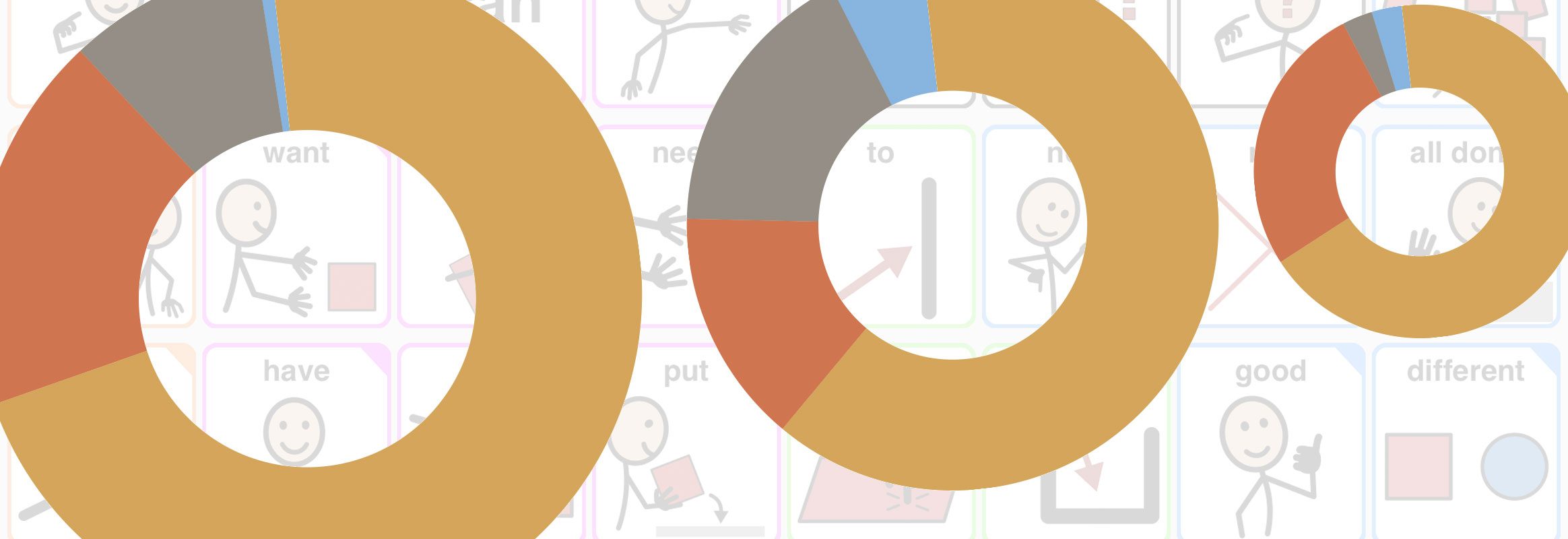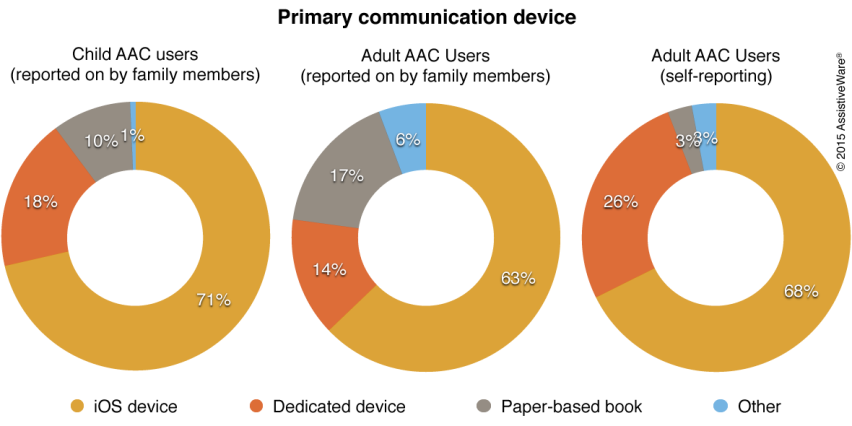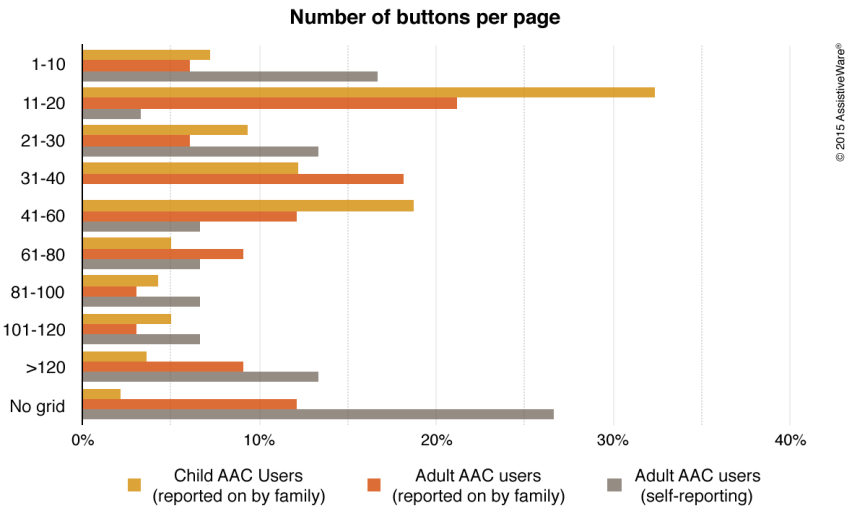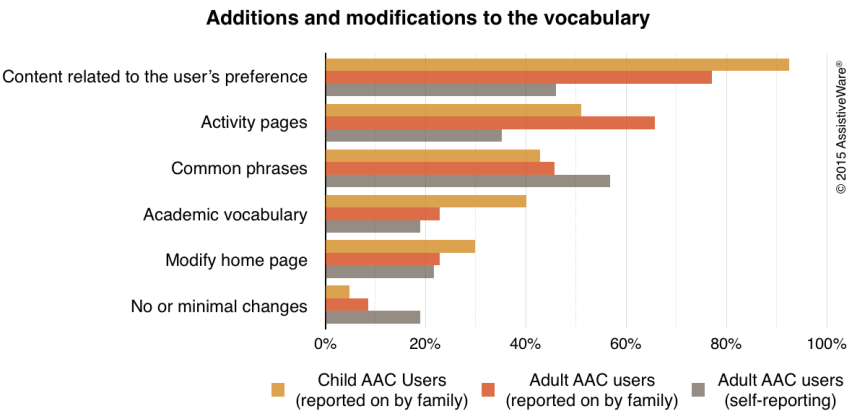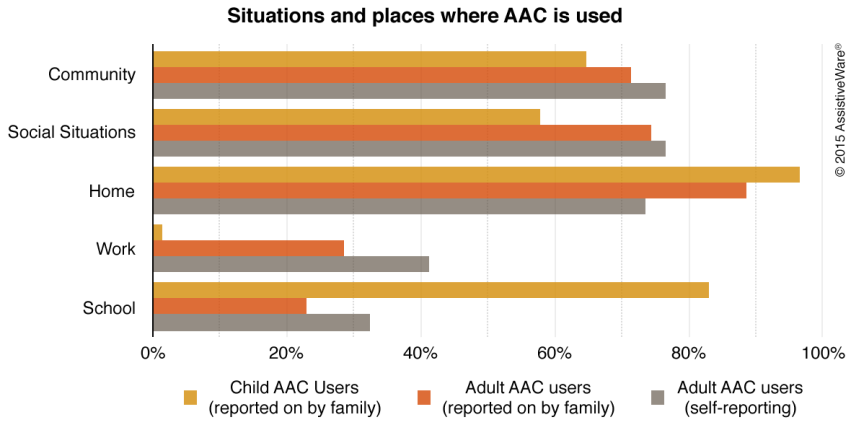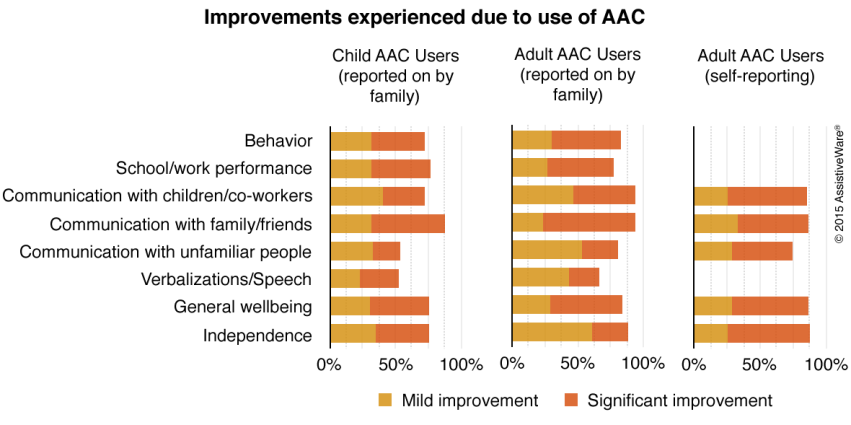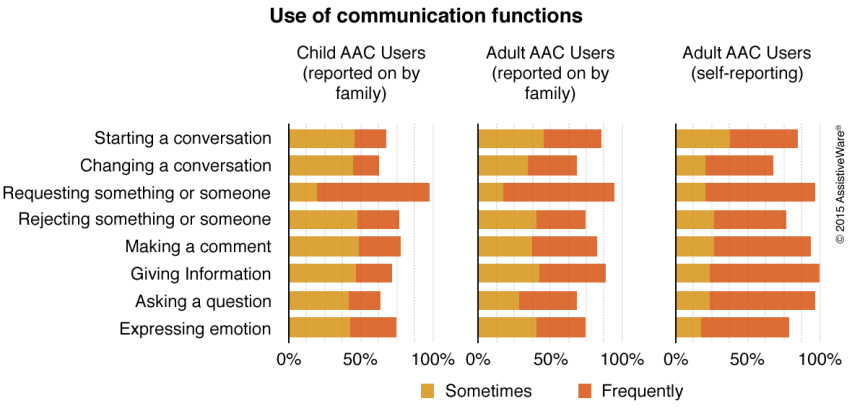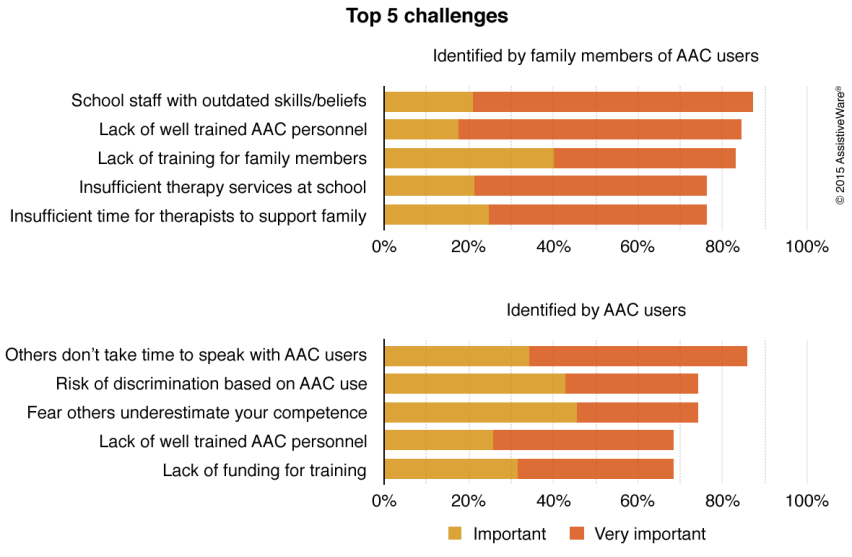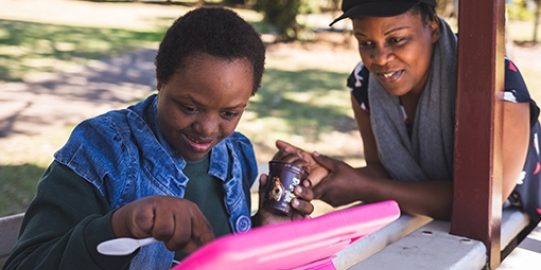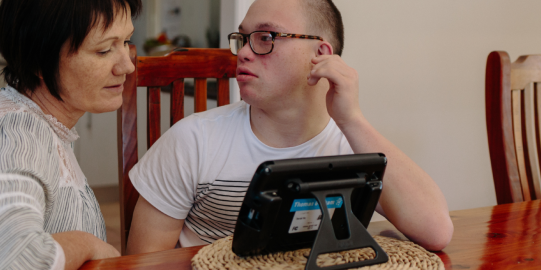In the last 6 years the Augmentative and Alternative Communication (AAC) landscape has significantly changed. AAC apps on consumer devices have led to a democratization of high-tech AAC. Many individuals are now obtaining AAC solutions through non-traditional pathways and alternative funding sources. Yet, knowledge of and experience with AAC best practices has not spread at the same pace. A 2012 exploratory survey revealed that few AAC users and families of AAC users felt they were getting good professional AAC implementation support.
Now, three years later, we want to get a better understanding of current practices and challenges. A new exploratory survey was conducted during AAC Awareness month. In three separate surveys we collected information from AAC users (34 respondents), family members of AAC users (182 respondents), and professionals working with AAC users (346 respondents). About 20% of the family members reported on adult AAC users and 80% reported on child AAC users. In the analysis below we separate out those two groups of AAC users.
The survey was designed by AssistiveWare together with Carole Zangari and Jane Farrall. The survey was shared through blogs, newsletters and social media in the US, Canada, Australia and the UK.
In this blog post we will share basic statistics for most of the questions from the AAC users and family members of AAC users surveys. In later blog posts we will share information on the survey for professionals, cover additional questions and present a more in-depth analysis.
Disclaimer
Because the survey was shared through blogs, newsletters, Facebook and Twitter the sample is biased towards people with a keen interest in AAC. The results thus represent the more knowledgeable segment of AAC users, family members, and professionals. Nonetheless, some patterns emerge across all three groups of respondents providing confidence in emerging trends.
